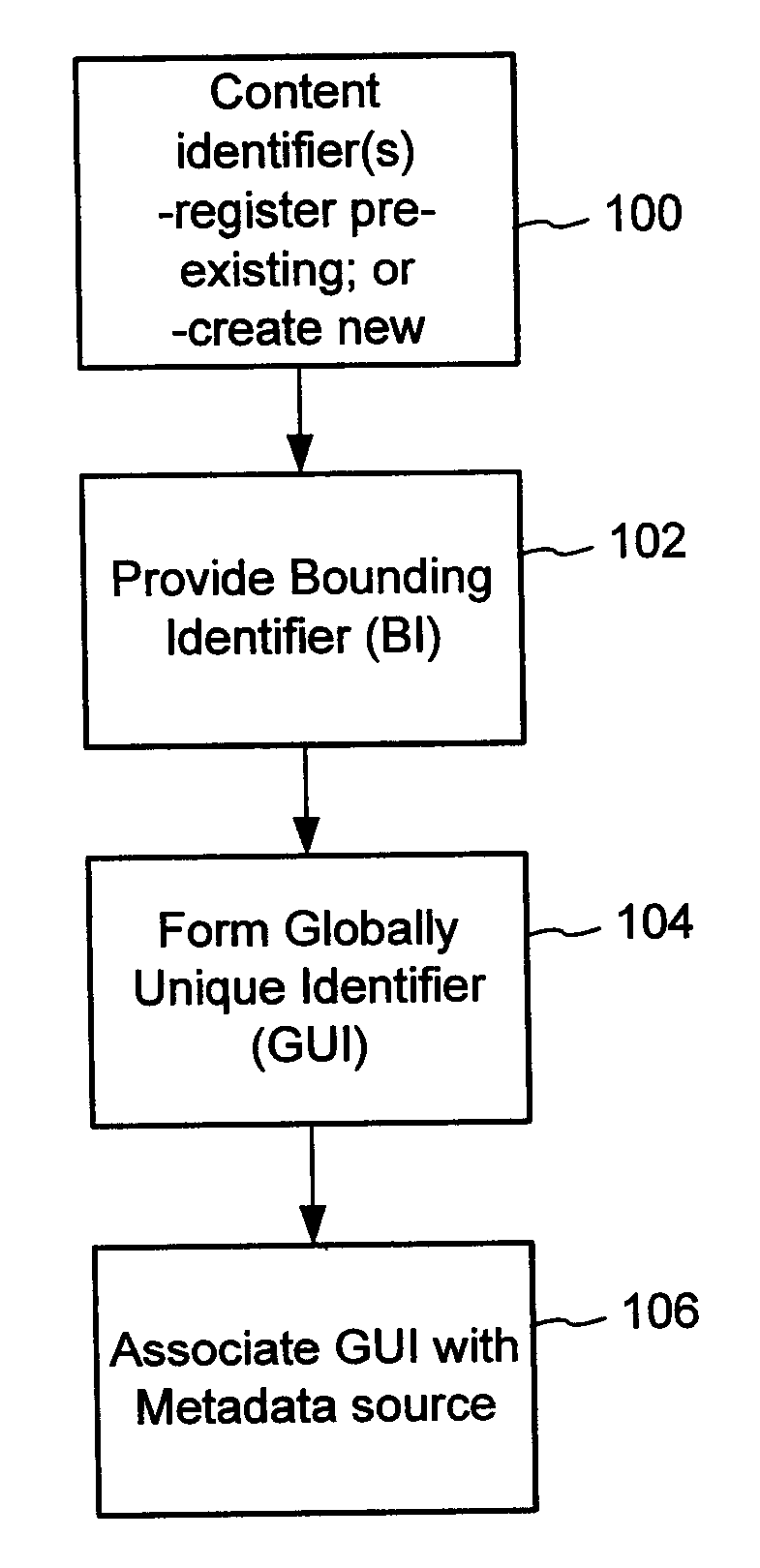Content Metadata Directory Services
a content metadata and directory service technology, applied in the field of content metadata directory services, can solve the problems of complex content provider universe, unstoppable disruption of traditional approaches to the monetization of primary media distribution, compatibility and interoperability challenges, etc., and achieve the effect of facilitating interoperability and facilitating interoperability
- Summary
- Abstract
- Description
- Claims
- Application Information
AI Technical Summary
Benefits of technology
Problems solved by technology
Method used
Image
Examples
Embodiment Construction
[0055]FIG. 1 is a flow diagram illustrating a method of associating a content object with a metadata source. This diagram is intended to show how a content metadata directory system performs registration of content IDs, which achieves two objectives:
[0056] 1. it enables integration of different content identification schemes with potentially overlapping content ID schema; and
[0057] 2. associates the each content ID with one or more metadata sources.
[0058] As shown in block 100, the directory system receives content IDs. These content IDs either originate from pre-existing sets (e.g., pre-assigned by an ID provider), or directory system itself issues content IDs for an ID provider upon request. The ID provider refers to an entity that provides content identification for content objects. Typically, this is a content identification technology provider, such as a provider technology for computing in band (e.g., watermarking or fingerprinting) or out of band identifiers (DRM container...
PUM
 Login to View More
Login to View More Abstract
Description
Claims
Application Information
 Login to View More
Login to View More - R&D
- Intellectual Property
- Life Sciences
- Materials
- Tech Scout
- Unparalleled Data Quality
- Higher Quality Content
- 60% Fewer Hallucinations
Browse by: Latest US Patents, China's latest patents, Technical Efficacy Thesaurus, Application Domain, Technology Topic, Popular Technical Reports.
© 2025 PatSnap. All rights reserved.Legal|Privacy policy|Modern Slavery Act Transparency Statement|Sitemap|About US| Contact US: help@patsnap.com



